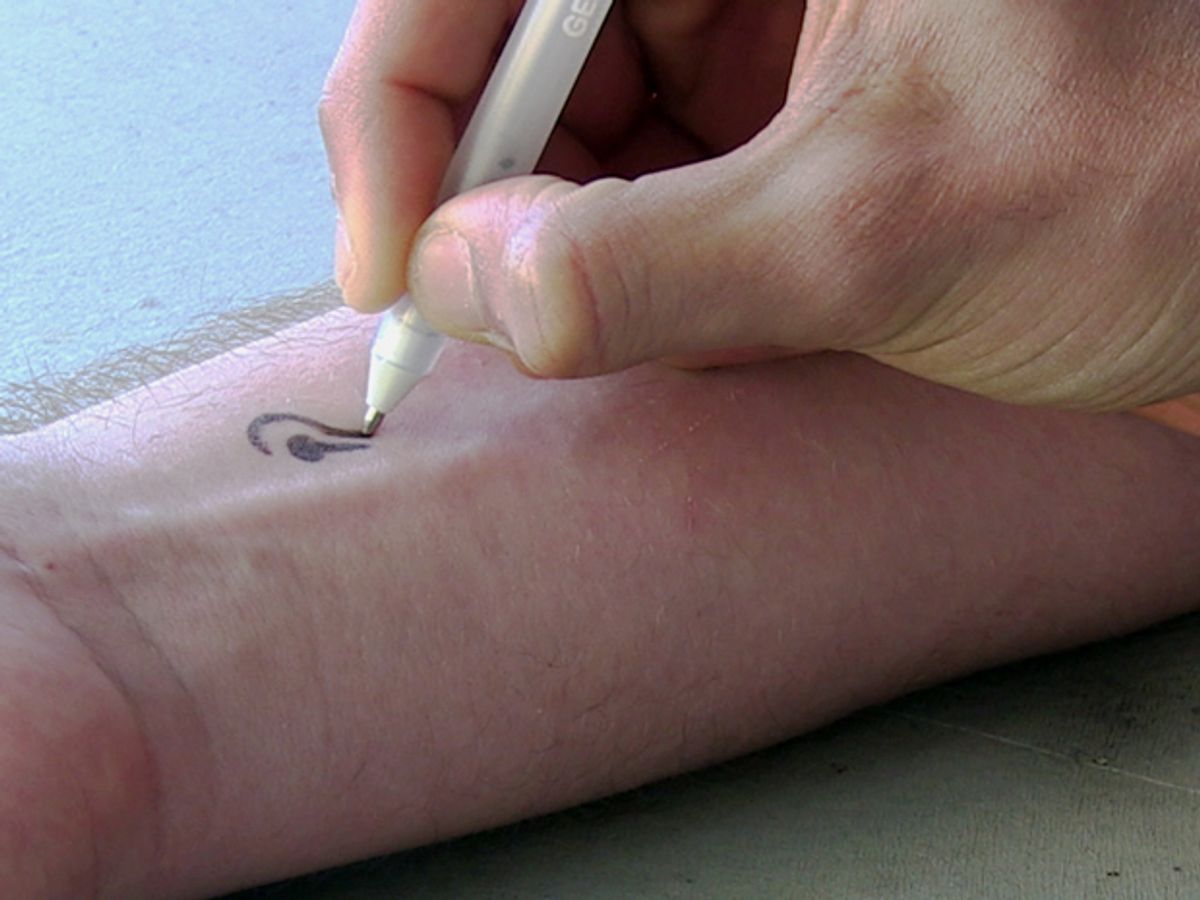Someday soon, on-demand diagnostics could be as simple as doodling on your arm or leg. Special sensor-laden inks would help diabetics monitor their blood sugar and allow people to stay on top of other elements of their body chemistry. The write-once, read-several-times inks could also let homeowners test for toxic pollutants, and help soldiers detect explosives and nerve agents on the battlefield.
Researchers at the University of California, San Diego (UCSD) who developed the inks published their results in the 26 February issue of the journal Advanced Healthcare Materials. They revealed that the main ingredients of these inks are the enzymes glucose oxidase, which responds to blood glucose, and tyrosinase, which responds to common pollutants known as phenols. To make these bio-inks serve as electrodes, they added electrically conductive graphite powder. They also added: chitosan, a clotting agent used in bandages, to help the ink stick to surfaces; xylitol, a sugar substitute, to help stabilize the enzymes during chemical reactions; and biocompatible polyethylene glycol, which is used in several drug delivery applications, to help bind all these ingredients together.
The scientists filled off-the-shelf ballpoint pens with their enzymatic inks. The pens could create a blood glucose sensor simply by drawing glucose-sensitive ink on a transparent, flexible strip that included an electrode. When a blood drop was placed on the sensor, the ink reacted with glucose in the blood and the sensor measured the reaction.
The UCSD team demonstrated that these biosensors were reusable. They only had to wipe the strips clean and draw more ink on them.
But the eye-popping achievement they reported was that the inks could eliminate painful finger pricks to draw blood simply by scrawling sensors directly on the body. The diagnostic body art, they said in the paper detailing their findings, would take glucose readings through the skin and deliver the results via a Bluetooth device. The investigators estimated one pen held enough ink to write the equivalent of roughly 500 blood glucose sensor strips.
The pens could also draw sensors on leaves to detect pollution using phenol-sensitive ink. The scientists noted that the inks could be modified to react with many other pollutants, such as heavy metals or pesticides, and can be drawn on a variety of surfaces such as smartphone cases and building windows.
The UCSD researchers noted these pens could help people build useful sensors anywhere easily and cheaply anytime they need to, without needing to know ahead of time where and when sensors might be required. The group’s next steps include connecting the handwritten sensors wirelessly to monitoring devices and analyzing how they perform in difficult conditions such as extreme temperatures, varying humidity levels, and extended exposure to sunlight.
Charles Q. Choi is a science reporter who contributes regularly to IEEE Spectrum. He has written for Scientific American, The New York Times, Wired, and Science, among others.



